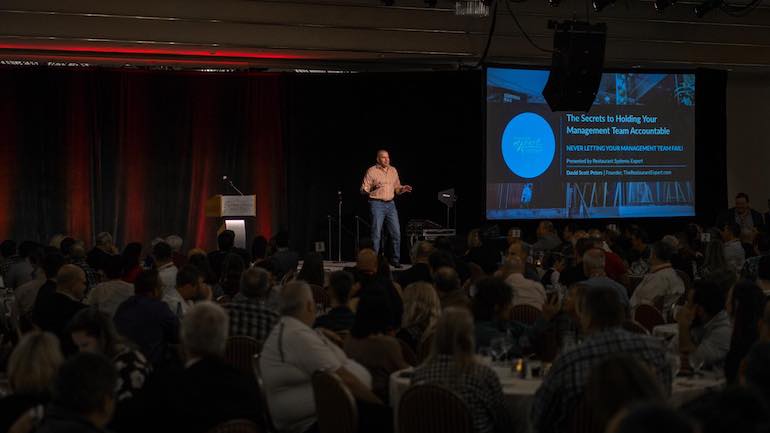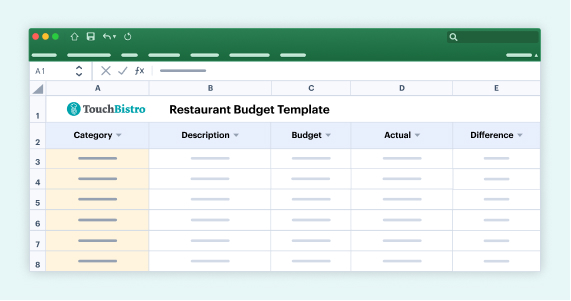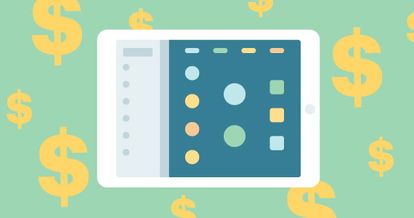Being a restaurateur isn’t just about knowing how to cook a meal, or how to manage your kitchen staff. You’ll also need to know essential business skills like understanding menu pricing strategies.
During times of inflation and the rising cost of food, it’s especially important for your restaurant to implement menu pricing methods to stay profitable and protect its bottom line. Keeping your costs manageable long-term, while also keeping customers content, is the ultimate balancing act that most independent operators need to play out to be successful in their business.
However, it’s not always easy to know where to start when it comes to menu pricing. Should you price your menu items based on your competitor’s prices, or the national food cost average? How do you know what your customers are willing to pay for your menu items? What other factors do you need to think about when figuring out your restaurant menu pricing?
To answer all of these questions and more, we interviewed David Scott Peters, restaurant coach, author, and menu pricing strategy expert to learn the ins and outs of menu pricing strategies. Continue reading to learn restaurant pricing strategies that work for restaurant owners, and to:
- Meet David Scott Peters: restaurant coach, author, and menu pricing strategy expert
- Discover the factors that affect restaurant menu pricing
- Uncover common misconceptions about menu pricing
- Find out popular menu pricing methods and strategies
- Learn how to use menu engineering to maximize profits
Meet David Scott Peters: Restaurant Coach and Menu Pricing Strategy Expert
David has an extensive and diverse background working in the restaurant industry.
He originally started working for his family’s restaurant catering business in Linwood, New Jersey. From there, he worked for a brewpub and cafe called Coyote Springs in Phoenix, Arizona, starting as a bartender and rising to become the Operations Manager. During this time, he consulted for Famous Sam’s Franchise and became the Chief Operating Officer, where he successfully turned around the company from near-bankruptcy over a period of just over five years.
In 2003, David started coaching independent restaurateurs based on his experience and passions. “I know what it’s like to be an independent operator. I know what makes a chain successful, and so I can give that independence – the same system and tools to change views without losing your independence.” David explains.
You didn’t open your restaurant to be a prisoner,” David reminds restaurant operators. “You opened your restaurant thinking you had a dream of freedom, that you were going to have time with your family, and that you were going to make money.”

Factors That Affect Menu Pricing
Driven by his passion to help restaurateurs achieve personal and financial freedom, David spends a lot of time helping operators perfect their menu pricing strategies.
And according to David, there are many factors that affect your restaurant menu pricing – from the style of service, price point, guest demographics, and quality of your products, to your core values. Based on his expertise, here are some of the most crucial factors for operators to keep top of mind.
Knowing Your Budget
Budget is a key factor that affects restaurant menu pricing. You have to have a realistic budget that’s based on what your labor costs and food costs are. For instance, if you’re a quick service restaurant, your food cost is going to be lower while in a steakhouse it’s higher. Your labor has to balance that out in either type of restaurant venue. A budget is the best way to find that balance.

Stay on top of expenses and manage costs with this restaurant budget template for Excel or Google Sheets.
Understanding Your Prime Cost
Prime cost is a number used to determine the minimum a restaurant can sell a product to cover the total cost of labor and product. For example, most experts refer to a 65% prime cost for a full service restaurant and a 60% for quick service restaurants.
David explains, “That means for every dollar that comes in the door, I’m going to use 65 cents in people and product just to deliver the product, before any other bills are paid, like rent or utilities, for example.”
That means not cutting your menu prices to a point where you can’t operate. Since costs have been rising since the Great Recession hit in 2007, David now also advises that the new prime cost is 55%, not 65%, especially if you make at least $850,000 a year in sales. The higher your volumes, the lower your prime cost should be while also staying true to your core values and to avoid buying low-quality items to the point where you cannot operate. It’s about running smart.
Finding Your Ideal Food Cost Based on Existing Customers
A typical restaurant runs 7 to 9 points higher than their ideal food cost. In the case of a 39% food cost, that means for every $1 that comes in, 39 cents is spent on food products. For example, if you were selling a burger, it would cost your restaurant 39 cents for the meat and bun that you’re serving.
Now, if a typical restaurant runs 7 to 9 points higher than its ideal food cost, that 39% is probably too high and mistakes need to be corrected. This includes issues like food waste, theft, spoilage, inaccurate orders, training problems, and cleanliness, which can all affect food costs. Often, our reaction when our food price is high is “I’ve got to raise my price.” However, sometimes, it is a matter of becoming more efficient with the products that we have in our menu mix.
Common Misconceptions of Menu Pricing
In addition to understanding the factors behind menu pricing, David is also careful to point out some common misconceptions. Moving past these myths is essential to maintaining profitability as an independent restaurant owner.
1. You Don’t Have to Undercut Everybody Else
One of the biggest menu pricing misconceptions that David highlights is that you don’t have to be the lowest-priced provider of food or drink. “That’s not how you’re going to make money,” David says.
Instead, you have two choices. First, you can price similarly to your competitors. For example, if you’re running a family casual concept and there’s a Chilli’s down the street, you should be in the same general price ballpark, even if they get their food for less. Alternatively, you can provide a better experience with outstanding customer service and an incredible product. In this case, you could price your products higher than anybody else.
2. Break the Myth of the 3x Markup Rule
Another myth that David busts is that of the 3x markup rule. He explains, “You’re going to have items that may be 38% food cost that are frozen out of the box and have a great cash contribution, but you don’t sell many of them. However, you might sell a ton of hand-cut french fries that are only 5% food cost.”
So what’s important to understand is that every restaurant will have a menu mix. David suggests, “Don’t price everything based on a percentage, because you are going to have some menu items that are higher or lower based on volume.”
3. You Can’t Price Everything at 33% or 34% Food Cost
“Your restaurant is not average,” David reminds us. That’s why we can’t price everything at the national average food cost. Instead, your food cost will be determined by various factors, like your restaurant location, style of service, product quality, price point, and your core values as an owner. For example, if labor costs are expensive, then you’ll have to lower your food cost to make a profit, and vice versa.
To know what your food cost should be, you should also know what your customers are actually purchasing in your product mix, and stay up-to-date with your recipe cost cards (how much the ingredients cost in a recipe). Knowing this information can help you figure out what you need to sell your menu items for, and how much money you will make for each sale.
Menu Pricing Tools
Knowing the strategy behind menu pricing is essential, but it’s also important to have the right tools. For David, there are two key menu pricing tools that every restaurateur should have in their back pocket.
POS System Report: Item Sales Mix Report
“The point of sales system is actually the most important piece of equipment a restaurant owner will ever buy,” says David.
This report that you get from a restaurant POS system shows you what your customers actually have purchased – including meals, side dishes, add-ons, and so forth. Then owners can add that info to their recipe cards to figure out their ideal food cost.
Cost of Goods Sold Software
Having restaurant management software can also help restaurateurs manage food costs. For example, MarginEdge is a software that can help restaurant owners gain insight into their restaurant’s food costs, budget, and other various insights – including daily P&L statements, price changes on your most-used products, and even food usage.
This kind of software usually integrates with your POS system and can help you pay attention to whether individual item prices have gone up or down, how they have affected your bottom line, and most importantly, where your food cost is running on a weekly basis so you can make small changes to your menu prices.
“MarginEdge was created by restaurant owners, and that’s why I like it and I use it with my coaching members. It’s a great piece of software for an operator,” David comments.
How to Use Menu Engineering to Maximize Profits
In addition to having the right tools, David also suggests that operators make the most of menu engineering strategies.
In other words, even if your food costs are out of control because of a mistake, there’s always room to re-engineer the menu down five points – it’s just a matter of figuring out where there is opportunity. And that’s where menu engineering comes into play. It’s the idea of changing your menu to help better inform your readers’ decisions and it can be done in a number of clever ways.
Using Photos, Descriptions, and Boxes
David explains that we can use data to inform menu design decisions, including photos and descriptions, and how they are laid out. He gives an example, “If I have 10 items side by side, the first, second, and last items will sell more than anything else. But, I put a box around them, the boxed menu items will outsell the first, second and last.”
Another tip from David is adding a picture. “If I put a picture, that item will outsell the first, second, last, and the boxed item!” So by using these strategic menu design ideas, you can influence your guest to buy something else that they would not have otherwise chosen, which can be something that is more profitable for your restaurant.
Using Eye Movement Charts to Design a Menu
Then there’s this concept of designing menus to direct eye movement.
One example David highlights is that of menu panels. “If you have a single-panel menu, the menu items placed in the middle and sell more,” David says. On the other hand, “If I have a two-panel menu, eye movement starts in the upper left-hand side corner to about a quarter way down from the right-hand side. Anything in the upper-right hand triangle tends to sell more because that’s where the eyes go.” So according to David’s advice, if you want to influence the guest to buy more of a particular item, you would move it to the upper right-hand panel.
Gone are the days of simply hiking up all of your restaurant menu prices when your business isn’t making enough money. With the right tools, including recipe costing cards, a reliable POS, and cost of goods sold software, you can make more informed menu pricing decisions. That could mean making a change to one or two items when your food costs are going up, reengineering your menu to bring attention to particular items, or creating a new special that will ring higher at the register. With the right data and menu pricing methods, you’ll have many options to choose from to keep your bottom line healthy and encourage guests to keep ordering more.
Download our free inventory template
Sign up for our free weekly TouchBistro Newsletter







